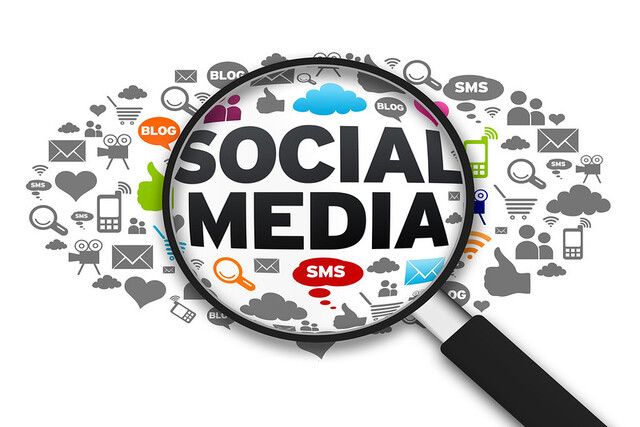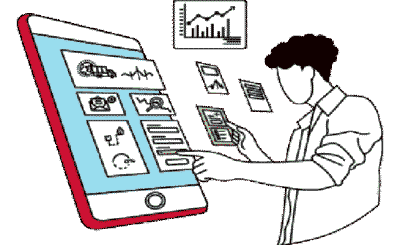Translation and technology have become inseparable in today’s interconnected world, particularly in the age of social media. As digital platforms facilitate instant communication across diverse linguistic backgrounds, the demand for effective translation services has surged. This evolution is not merely a response to globalization; It represents a significant change in the way we interpret and interact with language in real time. Professional translators and companies looking to grow internationally must both comprehend the implications of integrative technology tools. This article examines the trends influencing the innovation industry with an emphasis on the different forms of integrative innovation that are accessible, as well as educational opportunities and instances of translation technology in use.
Table of Contents:
The Role of Social Media in Translation
Social Media’s Worldwide Reach
Through social media sites like Facebook, Twitter, Instagram, and TikTok, people from different linguistic origins may connect and converse regardless of where they are in the world. This global interaction creates a demand for effective translation services to facilitate understanding and engagement.
User-Generated Content and Translation Needs
As user-generated content has grown in popularity, social media has developed into a forum for people to instantly express their ideas, opinions, and life experiences. This surge in content creation necessitates swift and accurate translation to ensure that messages resonate across different cultures and languages.
Translation Technology Tools, a Modern Necessity
Overview of Translation Technology Tools
Tools for technological translation encompass various software and applications designed to aid translators in their work. These tools range from basic dictionaries to sophisticated machine translation systems. Here are some categories of such tools:
- Machine Translation (MT): Instantaneous translations are provided by automated systems like Google Translate and DeepL, which give a rapid fix for comprehending documents written in other languages.
- Computer-Assisted Translation (CAT): SDL Trados and memoQ are two examples of tools that support human translators by offering features like glossaries, translation memory, and project management.
- Tools for Localization: Software that helps adapt content for specific markets, ensuring cultural relevance and linguistic accuracy.
- Transcription and Subtitling Tools: Applications like Amara and Rev streamline the process of creating subtitles for videos, making content accessible to a broader audience.
Types of Translation Technology
In the current technological landscape, several types of translation technology are emerging, each serving unique purposes:
- Statistical Machine Translation (SMT): This method uses algorithms to translate text based on statistical models derived from large corpora.
- Neural Machine Translation (NMT): A more advanced form of MT, NMT leverages neural networks to provide context-aware translations that are often more fluent and natural.
- Translation Memory Systems: These systems allow translators to reuse text and keep consistency by storing previously translated portions.
- Terminology Management Systems: Tools that help manage and standardize terms across projects, ensuring accuracy and coherence in specialized fields.
Notable Translation Technology Examples

Successful Implementations in Social Media
Several companies and organizations have effectively harnessed translation and technology to enhance their social media presence:
- Facebook: Utilizing NMT for its translation feature, Facebook allows users to read posts in their preferred languages, increasing engagement on a global scale.
- Twitter: Implementing automated translations helps users navigate tweets in foreign languages, fostering cross-cultural discussions and interactions.
- Instagram: The platform’s translation feature allows users to view captions and comments in their native language, broadening the accessibility of content.
Case Studies of Translation Technology in Action
- Global Brands: Brands like Nike and Coca-Cola have leveraged translation technology examples to localize marketing campaigns for different regions, ensuring their messages resonate with diverse audiences.
- International News Outlets: Organizations such as BBC and Reuters utilize advanced translation technology tools to provide real-time news updates in multiple languages, keeping their audiences informed regardless of location.
Translation and Technology Education
Pioneering Research: Translation and Technology UCL
Translation and Technology UCL has been at the forefront of research in translation and technology. Their programs explore the intersection of linguistics and technological advancements, preparing students for a dynamic career in translation.
Translation and Technology Courses
Many institutions now offer specialized translation and technology courses focusing on translation technology. These courses cover:
- Fundamentals of Translation Technology: Understanding various tools and their applications in translation.
- Machine Translation: Exploring the mechanisms behind MT and its practical uses in the industry.
- Localization Strategies: Learning how to adapt content for different cultures and markets effectively.
- Project Management in Translation: Managing translation projects using technology to streamline workflows and enhance productivity.
The Future of Translation Technology in Social Media

AI and the Evolution of Translation Tools
Artificial intelligence (AI) is set to revolutionize translation technology tools. As AI continues to improve, translation tools will become increasingly sophisticated, offering higher accuracy and better context understanding. This evolution will lead to more seamless interactions on social media, bridging language divides effortlessly.
The Development of Virtual Reality (VR) and Augmented Reality (AR)
Real-time translation will become more and more necessary as AR and VR become more integrated into social media. Imagine a virtual conference where participants from different countries can interact in their languages, with translations happening instantaneously. This technology could redefine how we communicate in global contexts.
Increased Demand for Localization
As brands expand their social media strategies internationally, the demand for localization will grow. Companies will need to ensure that their content is not only translated but also culturally relevant. This shift will necessitate the use of advanced tools of technology to adapt marketing materials, product descriptions, and user interfaces effectively.
Challenges in Translation Technology
Quality vs. Speed
One of the ongoing challenges in translation technology is balancing speed with quality. While tools like MT offer rapid translations, they may lack the nuance required for certain texts. Striking the right balance will be crucial for maintaining the integrity of the message being communicated.
Maintaining Contextual Relevance
Translations must not only be linguistically accurate but also contextually relevant. As social media content is often ephemeral and heavily reliant on cultural references, translators must remain vigilant to ensure that translations resonate with local audiences.
Addressing Data Privacy Concerns
The use of translation technology, particularly cloud-based services, raises concerns about data privacy. Organizations must ensure that sensitive information is protected while leveraging these tools for efficient communication.
The Increase in Work from Home

Changes in Workplace Culture
Remote work, has profoundly changed the nature of the modern workplace, allowing employees to collaborate from anywhere in the world. This shift has been accelerated by advances in technology, enabling seamless interactions across geographic boundaries. As organizations adopt remote work models, the need for effective translation services becomes crucial, especially in multinational teams that navigate diverse languages and cultural nuances.
Advantages of Working Remotely
Many advantages come with working remotely, such as more freedom and access to a worldwide talent pool. Employers may recruit top talent from anywhere, which fosters innovation and creativity. However, this diversity also presents challenges in communication, particularly when language barriers are involved.
The Role of Translation in Traveling
Enhancing Travel Experiences
Translation is essential for enriching travelling experiences by breaking down language barriers. When visiting foreign countries, effective communication helps travelers navigate environments, understand customs, and access services. Translation technology gadgets like mobile apps allow users to interact with locals, read signs, and understand menus, making their journeys more enjoyable and less stressful.
The Impact of Technology on Travel Communication
Translation technology examples have transformed how travelers communicate across languages. From machine translation to real-time devices, these tools enable effortless connections with diverse cultures. As highlighted in the article, these adaptive technique enhances global interactions, fostering cultural exchange and understanding, which significantly enriches the travel experience.
Conclusion
As we navigate the complexities of communication in the age of social media, translation technology will play an increasingly vital role. By understanding the trends shaping this industry—such as the rise of AI, the need for localization, and the impact of social media—we can better appreciate the tools and strategies available to bridge linguistic gaps. Future professionals are being prepared for by educational institutions, which are providing them with the information and abilities needed to succeed in this constantly changing environment. The field of translation technology is one to monitor closely in the upcoming years as its tools continue to progress and provide infinite opportunities for improved global communication.






